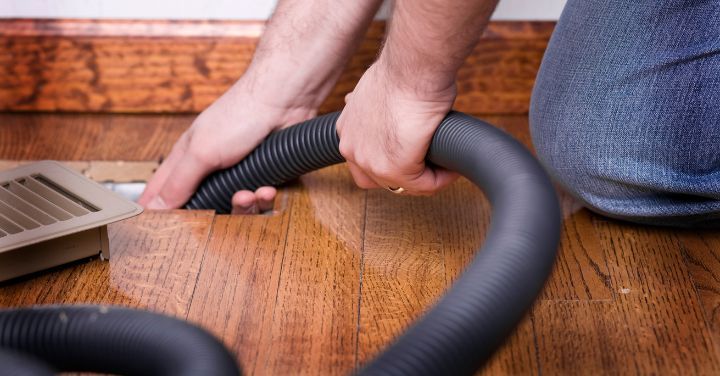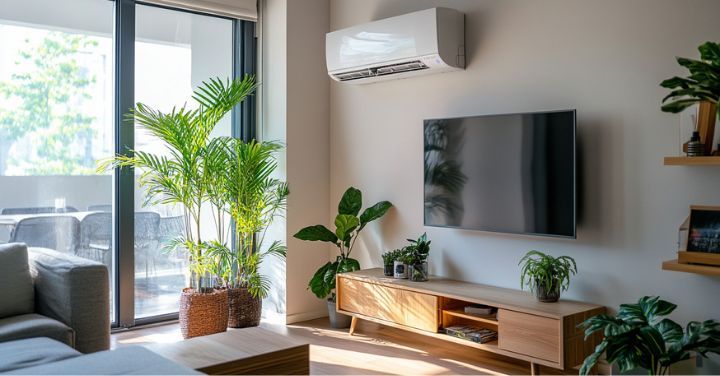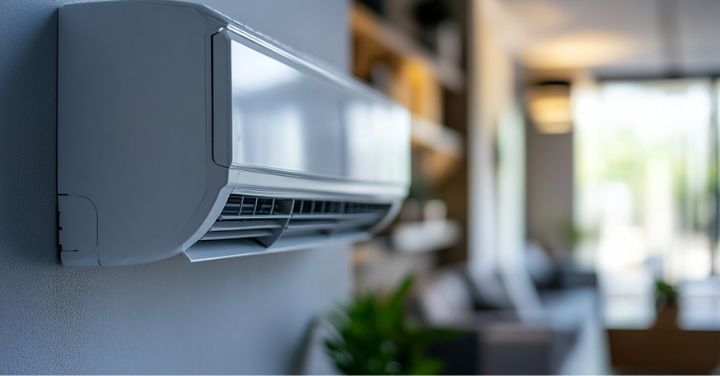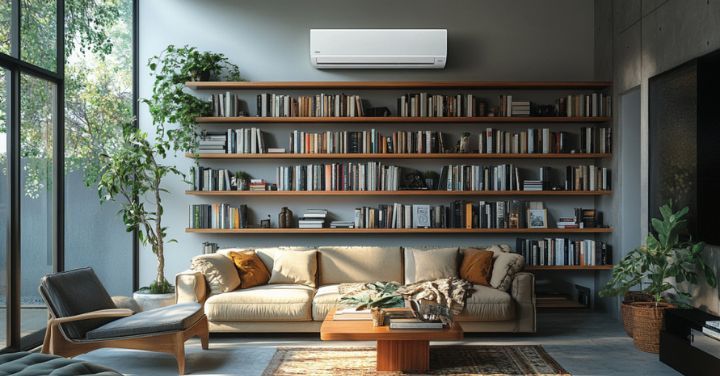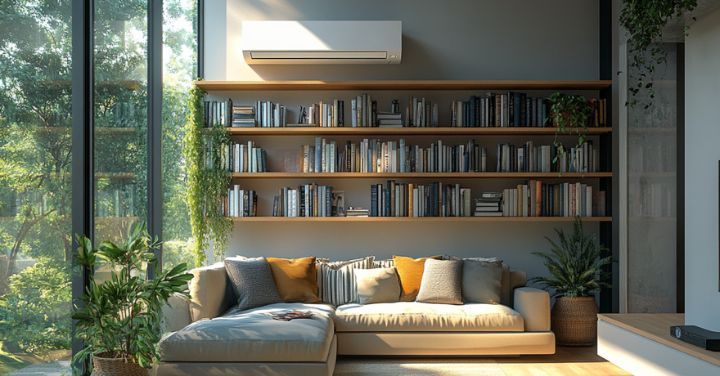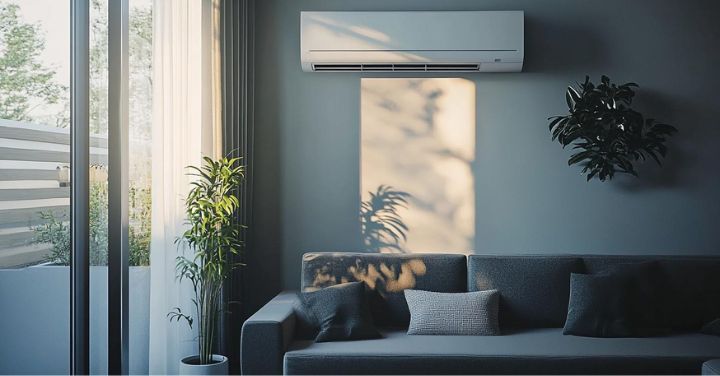What is the Average Cost of Mini Split Sanitizing in Crown Heights?
The average cost of professional mini-split sanitizing in Crown Heights ranges between $100 and $300. The final price depends on the system’s size, complexity, and additional services included in the cleaning process. Understanding the factors that influence the cost can help homeowners make informed decisions about maintenance and budgeting.
For high-quality mini-split sanitizing, consider reaching out to Cool Clean AC.
Factors Influencing Mini Split Sanitizing Costs
Several factors determine the cost of sanitizing a mini-split system, including:
- Size and Number of Units: Larger systems or multiple indoor units require more time and effort, increasing costs. A single-zone unit will cost less than a multi-zone system due to the additional components requiring cleaning.
- System Complexity: Advanced features and configurations may require specialized cleaning techniques, affecting pricing. Smart mini splits with automated sensors or built-in air purification require careful handling.
- Local Labor Rates: Professional services in Crown Heights may vary based on demand and technician expertise. Companies with highly trained staff may charge more but provide a superior cleaning service.
- Service Scope: Basic cleaning is cheaper, while deep sanitization and coil treatments cost more. Some services include antibacterial treatments or deodorizing solutions that can add to the total price.
- Company Selection: Reputable companies like Cool Clean AC provide quality services that justify their pricing. Opting for experienced professionals ensures a thorough and effective sanitization process.
Benefits of Regular Mini Split Sanitizing
Keeping your mini-split system clean provides several benefits:
- Improved Air Quality: Removes dust, allergens, and mold, enhancing indoor air quality. This is particularly important for households with individuals suffering from allergies or respiratory issues.
- Enhanced Efficiency: A clean system works more efficiently, reducing energy consumption. Accumulated dust and debris can cause the unit to work harder, increasing wear and tear.
- Extended Lifespan: Regular sanitization prevents damage and prolongs system durability. Cleaning the coils and other essential components prevents strain on the unit.
- Lower Utility Bills: Improved efficiency translates to reduced electricity costs. An unmaintained system consumes more energy, leading to higher monthly expenses.
- Fewer Repairs: Preventive maintenance reduces the likelihood of expensive breakdowns. Addressing minor issues early can prevent costly component failures.
DIY vs. Professional Sanitizing: Pros and Cons
Some homeowners consider DIY cleaning, but professional services offer significant advantages:
DIY Cleaning
- Pros: Lower upfront costs, quick dust removal, accessible for basic maintenance.
- Cons: Risk of damaging components, incomplete cleaning, and lack of specialized tools. Many internal parts require professional-grade solutions to remove bacteria and mold buildup effectively.
Professional Sanitizing
- Pros: Thorough cleaning, safe chemical use, expert maintenance checks, and long-term cost savings.
- Cons: Requires scheduling and upfront payment but ensures proper sanitization and system longevity.
Recommended Frequency for Mini Split Sanitizing
To keep your system in peak condition:
- Monthly Maintenance: Clean air filters every 1-2 months to prevent dust buildup.
- Annual Deep Cleaning: Schedule a professional sanitization at least once a year to maintain efficiency.
- Bi-Annual Cleaning for Heavy Use: If used extensively, consider sanitizing every six months, especially in high-humidity environments where mold growth is more likely.
Signs Your Mini Split Needs Sanitizing
Watch for these indicators that your mini-split requires immediate cleaning:
- Reduced Airflow: Dust buildup can clog filters, affecting performance. If you notice weaker airflow, it may be time for a professional service.
- Unpleasant Odors: Mold and bacteria can create musty smells that spread throughout your home.
- Increased Energy Bills: A dirty system works harder, consuming more power and driving up utility costs.
- Visible Dust or Mold: If you notice dirt or mold on the unit, it needs immediate cleaning to prevent further contamination.
Choosing a Reliable Sanitizing Service in Crown Heights
Selecting the right service provider is crucial for quality maintenance:
- Check Certifications: Ensure the company has certified HVAC professionals who follow industry standards.
- Read Customer Reviews: Positive testimonials indicate reliable service and customer satisfaction.
- Compare Prices: Balance cost with service quality to ensure you receive the best value for your money.
- Look for Specialization: Choose experts in mini-split cleaning, like Cool Clean AC, who understand the nuances of these systems.
Potential Risks of Neglecting Mini Split Maintenance
Skipping regular sanitization can lead to:
- Decreased Efficiency: A dirty system struggles to function properly, leading to poor temperature regulation.
- Higher Energy Costs: More power is required to maintain desired temperatures, increasing monthly expenses.
- Poor Indoor Air Quality: Dust, allergens, and bacteria circulate in the air, potentially causing health issues.
- Frequent Repairs: Small issues escalate into costly breakdowns when left unaddressed.
Environmental Impact of Regular Mini Split Sanitizing
Maintaining a clean mini-split system contributes to a greener environment by:
- Reducing Energy Consumption: Improved efficiency lowers electricity use, reducing carbon footprint.
- Minimizing Air Pollution: Clean systems produce fewer emissions and contaminants.
- Extending System Lifespan: Fewer discarded units reduce electronic waste and environmental impact.
Cost-Saving Tips for Mini Split Maintenance
Keep maintenance costs low with these strategies:
- Regularly Clean Filters: Prevents clogs and improves efficiency, reducing strain on the system.
- Keep the Area Clean: Reduce dust accumulation around the unit to maintain optimal performance.
- Schedule Annual Inspections: Identify issues early to avoid costly repairs or system failures.
- Use the System Efficiently: Avoid overuse, set optimal temperatures, and ensure proper ventilation for balanced airflow.
Understanding the Sanitizing Process: What to Expect
A professional mini-split sanitizing service typically includes:
- Air Filter Cleaning: Dust and debris removal for better airflow and improved air quality.
- Coil Inspection and Cleaning: Ensures heat exchange efficiency, preventing overheating or system strain.
- Refrigerant Level Check: Maintains proper cooling function and prevents compressor failure.
- Mold and Bacteria Treatment: Eliminates harmful contaminants that may affect health.
- Outdoor Unit Cleaning: Prevents dirt buildup, enhances airflow, and boosts overall performance.
Frequently Asked Questions About Mini Split Sanitizing
How often should I sanitize my mini-split system?
Professional sanitizing is recommended once a year, but more frequent cleaning may be necessary in high-use environments.
Can I clean my mini-split system myself?
You can clean filters and remove visible dust, but professional sanitization ensures a deep, thorough clean that prevents long-term issues.
Why does my mini-split emit a musty smell?
A musty odor often indicates mold or bacteria buildup inside the system. A professional cleaning can eliminate the source of the smell.
Final Words on Mini Split Sanitizing in Crown Heights
Investing in professional mini-split sanitizing ensures better air quality, system longevity, and energy efficiency. While DIY cleaning can help with basic maintenance, a thorough professional service prevents costly repairs and enhances overall performance.
For expert mini-split sanitizing services in Crown Heights, contact Cool Clean AC. Their experienced professionals provide top-quality cleaning to keep your system running smoothly. Schedule your service today!



